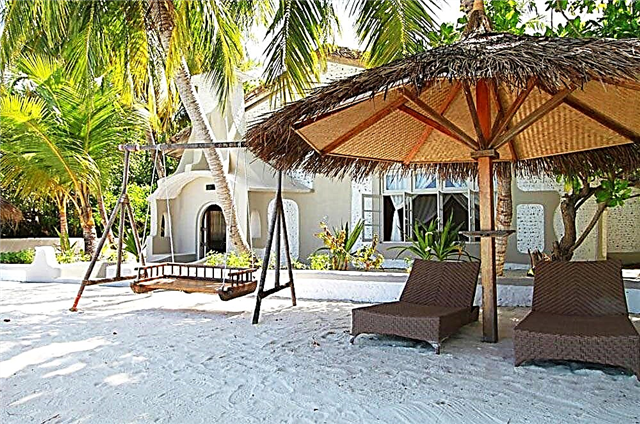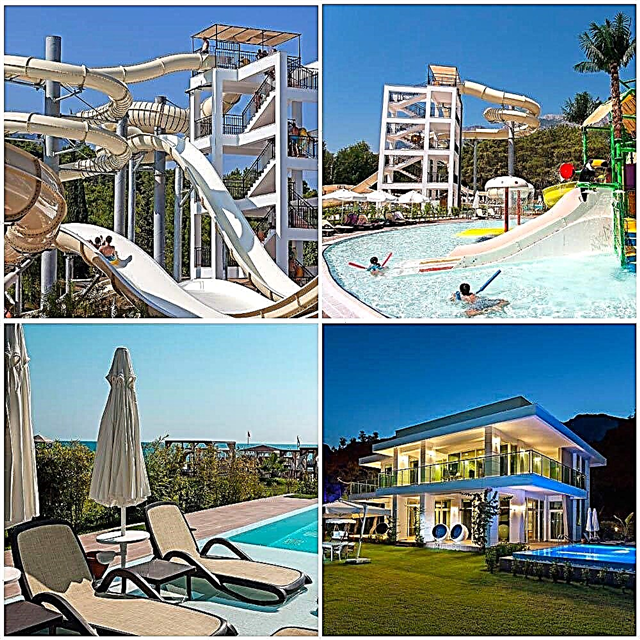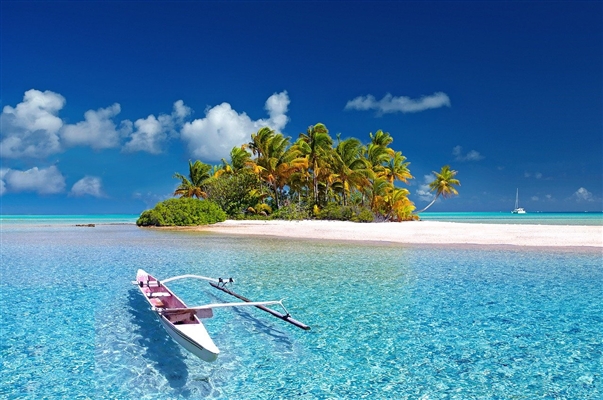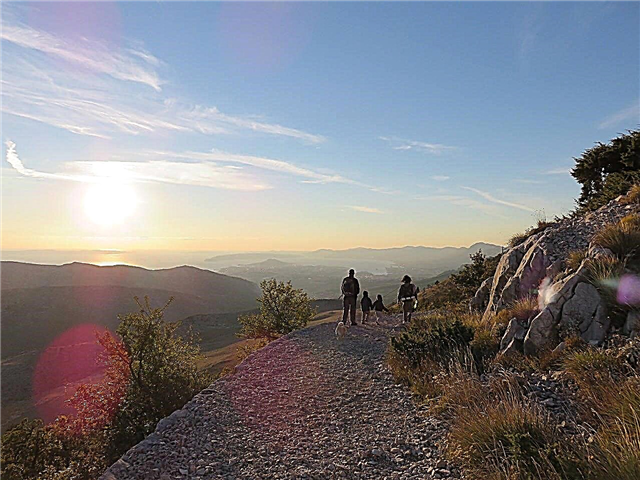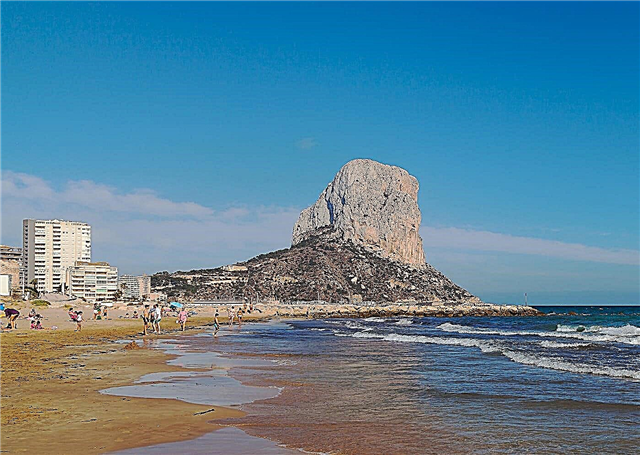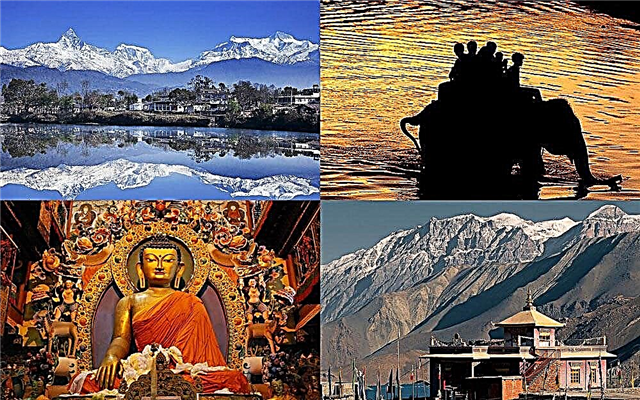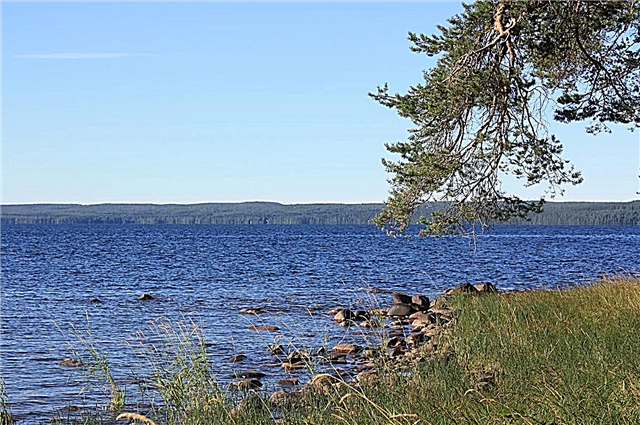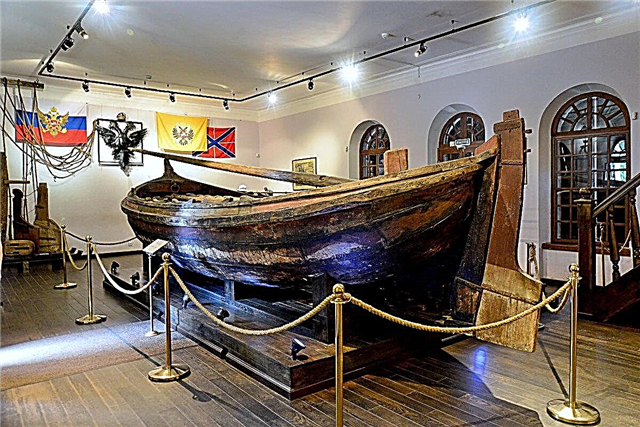The city, included in the route of the Golden Ring of Russia, will win the heart of any traveler. A visit to Pereslavl-Zalessky allows you to feel the atmosphere of an old Russian city, whose history goes back more than 10 centuries. It has preserved earthen ramparts of ancient defensive structures, white-stone churches where the great dukes were baptized, masterpieces of ancient Russian wooden architecture.
One of the most interesting places is the ancient Pleshcheyevo Lake. Around it there are many ancient temples and archaeological sites, and the lake itself attracts dozens of kiters and just outdoor enthusiasts. Among the many original museums in the city, the museums of Ves'kovo village stand out. It houses the Boat of Peter I and private unusual museums - the house of the teapot, the museum of the history of money, the museum of gramophones and the "Kingdom of vendace".
The most interesting and beautiful places
List, photos with names and descriptions of the best sights of Pereslavl-Zalessky. He will help you plan routes for self-examination of the top places of the city in 2-3 days.
Lake Pleshcheyevo National Park
A national park, a visit to which will appeal to lovers of outdoor recreation. The shores of Lake Pleshcheevo are famous for their picturesque landscapes. A natural reserve with an area of 24149 hectares is laid out on its banks. There are more than 20 archaeological, historical and architectural monuments, as well as natural monuments in the park. On the equipped beach area you can swim, put up a tent and barbecue.

Read about all the top places in the region: the main attractions of the Yaroslavl region.
Pereslavl Museum-Reserve
Located within the walls of the Gorky Monastery, founded in the XIV century. Visitors can get acquainted with the buildings of Russian architecture, as well as appreciate the museum's collections. The expositions consist of works of wood sculpture, painting, decorative and applied art. The museum contains about 80,000 exhibits. Preserved jewelry of the XV-XIX centuries from the destroyed monasteries and temples.

Transfiguration Cathedral
Founded in 1152 at the initiative of Yuri Dolgoruky. Completed in 1157 by Andrey Bogolyubsky. The cathedral is made of white stone blocks and is one of the earliest surviving similar buildings in the country. Many Pereslavl princes were baptized there, including Alexander Nevsky. Its walls are 1 meter thick. During construction, the height of the cathedral was 22 meters, now about 90 cm of the foundation is hidden by the ground.

Vladimirsky Cathedral and Alexander Nevsky Church
Two similar five-domed temples are located next to each other. They were built in the 18th century and were part of the monastery. After the closure of the monastery, the churches became parish. In Soviet times, churches were repeatedly wanted to be destroyed. However, the architectural style of the temples was recognized as interesting and culturally valuable, and the temples were preserved. Vladimirsky Cathedral was built in the provincial baroque style, the Nevsky Church looks simpler and more modest.

Metropolitan Peter Church
Built in the 16th century. The tent-roofed church is built of bricks in the shape of a cross. Previously, there was a wooden church built in 1420. It has undergone several restorations, during the last one in the 1970s it was restored to its original appearance. A little earlier, in the 1950s, the unique ploughshare covering of the walls was restored. The appearance of the church is considered one of the most beautiful in the city among the churches of the classical style.

Museum-estate "Boat of Peter I"
The museum in the village of Ves'kovo is considered one of the oldest provincial museums in the country. The main exhibit is the ship Fortuna. It is believed that Peter I participated in its construction. The boat is well preserved and is the only surviving example of ships of the amusing royal flotilla. The boat was built at the end of the 17th century. The Botanical House appeared in 1802. In 1852, a monument to Peter I, a triumphal arch, a rotunda, and the White Palace were erected.

Dendrological Garden named after S.F. Kharitonov
Founded in 1952. More than 600 different types of plants, trees and shrubs from around the world are planted in the garden. The garden area is 60 hectares. Interactive trails are laid along the territory of the arboretum, there is a 500-meter ecological trail, and you can rent a bicycle. There is an excursion service. The guides tell you about the legends, facts and peculiarities of the plants growing in the arboretum.

Pereslavl Railway Museum
Private museum of railway equipment, machines and mechanisms used in the late 19th and early 20th centuries. There are four steam locomotives, manufactured in 1928-1955, passenger cars, railroad cars. Many exhibits are certified as historical monuments as the only ones that have survived. The museum is located in the former premises of the depot and on the abandoned narrow-gauge tracks. There is an exposition of vintage cars and motor vehicles.

"Kiter place"
The name "Polyana" is also common. A popular skiing spot among kiters. Located on Lake Pleshcheyevo. On a windy day, you can see hundreds of sails here - and this enchanting sight is worth seeing with your own eyes. A ski station and a ski school are equipped for athletes. The gentle coastal sandy area of the lake is great for beginners. It is especially good to ride on "Polyana" with a south wind.

Aeronautics Festival "Golden Ring of Russia"
A unique event takes place in mid-July. During the festival, several dozen balloons rise into the air. Festival guests can not only watch their flight, but also fly on them themselves. From above, you can appreciate all the beauty of the ancient city and take great photos. The balloon flight routes are built so as to fly to the left by Lake Pleshcheyevo. During the festival, concerts and light shows are held.

Natural sights of Pereslavl-Zalessky
One of the most beautiful places in the city is Aleksandrova Gora, and more specifically, the picturesque views that open from it. It's nice to walk along the banks of the Trubezh River, relax on the city beach.
Blue stone
A genuine ritual stone from the times of pagan Rus. Located near Lake Pleshcheyevo, near the disappeared ancient Russian settlement of Kleshchin. Previously, it was located on the territory of the Borisoglebsk Nadozerny Monastery. The monks believed that evil spirits lived in him. When wet in the rain, the stone changes color from gray to blue - this is the reason for the name of the stone. The weight of the stone is about 12 tons. It consists of quartz biotite schist.

Alexandrova mountain
A hill located on the shore of Lake Pleshcheevo. According to one version, the artificial mountain was built by Alexander Nevsky, who founded the Alexander Monastery here in the 13th century. According to the other, the ancient tribes of the Meri performed pagan rituals on it. They lived in these places from the 7th century BC and founded the city of Kleshchin. Currently, the mountain is used by tourists as an observation deck, from which they open views of the lake and monasteries.

Trubezh River
A tributary of the Pleshcheyevo Lake, where Peter I created an amusing flotilla. The source of the river is located in the Berendey bogs. The river is 36 km long. At the mouth of the river, next to the Temple of the Forty Martyrs, there is a beach area. An observation deck is also equipped here. The banks of the river are very picturesque, branches of willows hang over the water, there are multicolored flat-bottomed boats, which can be approached by wooden berths. Ducks live in clear and transparent water.

City beach of Lake Pleshcheyevo
The largest lake-side beach within the city. The well-groomed sandy beach is popular with vacationers. People are attracted by clean sand, smooth entry into the water, clean and clear water. Shallow water especially attracts families with children - you can go 50 meters deep, while the water level will be waist-deep.There are attractions on the beach, cafes, sports and playgrounds, catamarans and boats for rent. Rescuers are working.

Historical places of Pereslavl-Zalessky
Archaeological monuments - an ancient settlement and the remains of fortifications.
Earthen shafts of the Pereslavl Kremlin
The ramparts were created in the XII century at the direction of Prince Yuri Dolgoruky, when the fortress was moved to the mouth of the Trubezh River. The length of the shafts was more than 2 km. The height of the shafts is currently 10-12 meters, the width of the shaft base is about 30 meters. Several centuries ago, along the wide ridge of the rampart, there were double walls with towers. The shafts did not crumble over time, as they are based on wooden log cabins.

Kleshinskoe settlement
An ancient Russian city of the XI-XII centuries, now disappeared. The settlement is located near Lake Pleshcheyevo. Its name is mentioned in the Tale of Bygone Years. According to many historians, the area of the village was about 12 hectares. City fortifications have been preserved on the north-eastern shore of the lake. During excavations, fragments of ceramic products, coins of the 10th and 11th centuries, a pendant with the Rurik family name were found here.

Monasteries and churches of Pereslavl-Zalessky
Places of worship in the city, Orthodox churches and places of pilgrimage.
Nikolsky Pereslavsky Monastery
Convent, founded in the middle of the 14th century. The monastery reached its heyday in the 15th century, when Tsar Ivan III presented him with state lands. The monastery was destroyed several times, it was especially badly damaged in 1923, when the Bolsheviks blew up the bell tower and the main cathedral. The restoration of the ruins began in 1993. The Annunciation Church, St. Nicholas Cathedral, the belfry and the Church of St. John the Baptist were rebuilt.

Nikitsky monastery
Monastery near Lake Pleshcheyevo. The exact date of foundation is unknown. It is believed that this is one of the most ancient monasteries in Russia and it was founded earlier than 1186. The oldest surviving building to this day is the Nikitinsky Cathedral and the fortress walls surrounding the monastery built in the 1560s. The royal family of the Romanovs donated a lot for the construction of the monastery. In the 17th century, Peter I lived in the monastery for some time.

Holy Trinity Danilov Monastery
Founded in 1508. In the 1540s, the Trinity Cathedral was erected in the monastery in honor of the birth of the Grand Duke - the future Ivan the Terrible, and the elder of the monastery, Danila, became his godfather. The cathedral was given the status of an architectural monument. Paintings of the 17th century have been preserved on its walls. The Church of the Praise of the Mother of God of 1695 is very beautiful. The Holy Gates are crowned by the gate church of the Tikhvin Icon of the Mother of God.

Feodorovsky monastery
Founded in 1304 after the battle between the troops of the Moscow prince and the Yaroslavl ones. In 1557, by order of Ivan the Terrible, the Fyodorov Church was laid in the monastery in honor of the birth of the heir Fyodor. This temple has survived to the present day. The Kazan Church and the Vvedenskaya Church have survived from the beginning of the 18th century. For pilgrims, excursions are conducted on the territory of the monastery. There is a refectory where you can buy monastery pastries.

Church of the Forty Martyrs
It is a cultural heritage site of the 18th century. The stone building of the church was built in 1755 on the site of dilapidated wooden churches. Located at the mouth of the Trubezh River. From Lake Pleshcheyevo, a picturesque view opens onto the church, which is often published on postcards of the city. The red walls of the church with white details in the decoration are visible from afar and previously served as a guide for fishermen who went out onto the lake to catch their catch.

Simeon Church
The cathedral was built in the Baroque style and looks very elegant. The walls of the two-storey church are painted red, the platbands, pilasters and cornices are white, and the roof is green. The windows are decorated with stucco. The hipped bell tower is built into the base of the building. The roof is crowned with five domes with crosses. The church was built at the beginning of the 17th century, later rebuilt after a severe fire. The shrine is an icon of the Kazan Mother of God.

Sretenskaya church
Built in 1785, consecrated in the same year. Located on a hillock on the territory of the former monastery monastery. The building style is classic. The snow-white walls are covered with a sky-blue roof. The decoration of the Sretensky Church is a portico with columns and a three-tiered bell tower. The wall paintings were made in the 19th century. One of the shrines of the temple is a rare icon of Christ the Savior. It is believed that it belonged to Saint Luke.

Church of the Intercession
The stone church was erected in 1789 on the site of the Pyatnitskaya wooden church. To this day, the appearance of the church has remained practically unchanged. This is the only church in the city built in the Moscow Baroque style. A three-level bell tower with a thin high spire is attached to it. Divine services in the church did not stop even during the Soviet era. A carved iconostasis, wall paintings, icons have been preserved since the 19th century.

Church of the Sign
The stone temple replaced the Church of the Nativity of John the Baptist in 1788. During the reign of Peter I, there was a shipyard next to the church, and ships of the Pereyaslav flotilla were kept on the shore. In the 1930s, the church was destroyed to the ground. The restored church was consecrated in 2010. Its graceful appearance is made in the style of Russian architecture of the 17th century. The walls of the temple are decorated with mosaics, and the ringing of bells can be heard throughout the area.

Cultural landmarks of Pereslavl-Zalessky
The most popular museums and exhibitions in the city and in nearby villages, which will be interesting to see.
Cultural and Exhibition Center on Rostovskaya
The two-storey building recreates the atmosphere of the past centuries. The center organizes exhibitions, concerts, master classes, festivals. The themes of the exhibitions are unusual - the World of buttons, Theatrical dolls of the world, New Year's toys. Several exhibition halls allow simultaneous holding of events of different themes. The main exhibits of the exhibitions are works from the collections of the Pereslavl Museum-Reserve.

Historical and Cultural Center "Russian Park"
A unique institution where the heritage of the country for the 19th-20th centuries is collected. More than 1000 items from the collections reflect the culture and traditions of the Russian people. You can get acquainted with them at museum sites, street expositions, interactive zones. The objects are interesting for both adults and children - a glade of Russian folk tales, alleys of Russian painting and Russian platbands, an exhibition of birdhouses, a museum of tea and kvass, and a museum of Russian fun.

Iron Museum
A private museum is dedicated to the history of household irons. His collection includes more than 200 irons of different types - cast iron, gas, electric, coal. The irons you like from the collection can be purchased. More than 1000 people visit the museum every month. Once a year, the Iron Festival is held, where you can try all the exhibits in action. The museum is located in a restored merchant mansion.

Museum of Peasant Design "Horse in a Coat"
The original format of the museum attracts visitors to antiquity and peasant life with the help of modern technologies. The basis of the expositions is the objects of art of the peasants of the 18th-19th centuries. On display are textiles, carved wooden figures, forged items, and ceramics. Master classes and excursions are held. The museum is located in the historical part of the city and its building is stylized as Russian architecture of the 17th century.

Radio museum
Another museum with an original theme. Among its exhibits are the first televisions and tape recorders in the USSR, loudspeakers, radios and radio points. Most of the exhibition is dedicated to household tube radio, including those from Western countries. There are exhibits of which there are only a few copies in the world. Almost all devices are in working order. There is an exposition of the USSR naval space fleet.

Museum of antique sewing machines
It took the creators about 10 years to find and restore the collection of sewing machines from the 19th and 20th centuries.The museum exhibits exhibits from different countries - Italy, France, USA, Scotland, Russia, Great Britain. There are about 300 cars in the collection. The museum is located in the building of a former embroidery factory. Master classes are held for guests. You can sew your own "Bag of Happiness". There are excursion programs around the museum and the city.

Alexander Nevsky Museum
A small museum with an interesting collection dedicated to historical figures. One of the expositions presents a model of the city from the 12th century. Other exhibitions tell about icons depicting Alexander Nevsky, orders and medals he received. Four dummies show the vestments of the 13th century warriors - Teutonic knights, Russian men at arms, Horde. Alexander Yaroslavovich himself is dressed in chain mail and a scarlet cloak.

Museum of Tricks and Tricks
A kind of museum that tells about the imagination and creativity inherent in the Russian people. Guests are shown old items that help in everyday life - prototypes of food processors, a cane-stool, a bottle-refrigerator, cups for mustachioed men. The collection includes the country's first washing machine and an ordinary ribbed washing board. The guides tell fascinatingly about the purpose of unusual and interesting objects.

"House of Berendey"
Cultural and entertainment area with a small museum, interactive tours and activities. In a playful way, guests are told about the peculiarities and traditions of the Russian way of life. Some of the excursions are dedicated to folk holidays - Maslenitsa, Apple and Honey Savior. Festive programs include festivities, fun rituals, folk amusements. There are master classes in art painting.

Museum "House of the Teapot"
The museum is located in the village of Ves'kovo. It is located in a wooden hut, originally painted in different colors. There is a real Russian stove in the hut. The museum is decorated with humor and taste. In addition to teapots, the collection of the museum contains samovars, dishes, candy boxes, sugar bowls, tin cans for storing tea. Most of the items were made in the late 19th and early 20th centuries. There is a souvenir shop at the museum.

Museum of gramophones and gramophone records
Another original museum in Veskovo. It displays more than 200 exhibits - gramophones of the early XX century, domestic and foreign gramophone records, gramophones, electric players, music boxes. There is an interesting collection of gramophone needles. The exhibits in the museum can be seen and heard. Audio equipment is in working order, guides, at the request of visitors, demonstrate any of them in action.

Museum "Ryapushka's Kingdom"
Vendushka is a fish listed in the Red Book and living only in Lake Pleshcheyevo. She is depicted on the coat of arms of Pereslavl-Zalessky. The museum exposition tells about the unique features of fish, how it was caught in tsarist times for the Russian autocrats, and about cooking. The guide will show visitors the fisherman's hut, tell about the history of the ancient Pleshcheyevo Lake. At the end of the excursion program, there is a fish tasting.

Museum of the History of Money
Opened in 2010. Located in the village Ves'kovo opposite the Teapot Museum. The founder of the museum, Alexander Altunin, has been collecting for the museum for over 40 years. Among the exhibits of the museum are various types of means of payment from different eras and countries - beads and shells, coins of ancient Russia, Byzantium, medieval Europe, securities and banknotes of the 20th century. A separate exposition includes porcelain items and old toys.

Museum "The Birth of a Fairy Tale and Slavic Mythology"
An interactive complex dedicated to ancient culture and Russian folklore. They tell about the world of the Far Away Kingdom in a playful way. Visitors will learn about the customs and traditions of pre-Christian Russia, about magical characters and heroes - mermaids, goblin, heroes. In the exhibition area you can see the hut of Baba Yaga, the Tsar's tower, the Russian stove, and the house of the undead. The museum is located 30 km from the city in the village of Vasilevo.

Monuments to historical figures
There are not many sculptural compositions, memorials and monuments in the city. Only two monuments stand out, one - to the famous native, the second - to the founder of the city.
Monument to Alexander Nevsky
Ancient Pereslavl-Zalessky is the birthplace of the famous commander. In the 13th century, the prince's ancestral estate was located on the territory of what is now Red Square. In 1985, a bust monument to the Russian hero was erected in the center of the square. Prince Nevsky is depicted in military attire - a helmet and chain mail. The monument is located near the Transfiguration Cathedral. The author of the project is L. Kapitsa, the sculptor is S. Orlov.

Monument to Yuri Dolgoruky
The monument to the founder of the city is located in the garden of the Goritsky Monastery. It was moved here from the exhibition hall of the Pereslavl Historical and Architectural Museum-Reserve. The monument was erected in 1963 and is a copy of the bust of the Grand Duke on Tverskaya Square in Moscow. The same group of sculptors worked on the creation of the bronze monument. Dolgoruky is dressed in chain mail and a helmet, his gaze is stern.

Ancient estates of Pereslavl-Zalessky
Beautiful historical estates, where you can get acquainted with their former inhabitants, see the way of life and living conditions of that time.
Manor of the Kardovsky
Wooden house, decorated with carved platbands, where the teacher and artist D.N.Kardovsky lived and worked. The first floor of the old house has partially sunk into the ground. Chimneys on the roof of the estate have been preserved. Picturesque landscapes of Pereslavl-Zalessky have always attracted people of art - artists and sculptors. The House of Creativity named after Kardovsky was founded for them in the estate. A small hotel and a catering unit were built.

Museum-estate of the Ganshin
The restored merchant's estate is located 30 km from the city in the village of Gorki. In the museum, visitors are told about the history of the area and the estate itself, as well as about the pre-revolutionary life of the peasants. The Ganshin estate was visited by V.I.Lenin, and Ganshin himself was engaged in reprinting the manuscript of his book. In 1927, the manor house burned down, restoration was started in the 1960s. The hunting lodge, where Lenin lived when he was staying at the estate, was restored in 1985.

Holy springs of Pereslavl-Zalessky
Among several sources, these are the most visited and revered by believers.
Spring of Saint Barbara
The holy spring has been known to the inhabitants of the city for over 200 years. The legends say that he was discovered by a deaf-mute young man, who at the source gained the ability to speak and was able to call his fellow villagers. A small chapel was built at the source, next to it there is a temple in the name of John the Theologian and St. Barbarians. The water in the spring is considered curative because of the silver it contains, and there is a swimming pool for those who come to it.

Holy spring of Nikita the Stylite
Located in a lowland one kilometer from the Nikitinsky monastery. The river Sluda flows nearby. The source has been known since the time of the creation of the "Life of St. Nikita "of the XII century. The water in the spring is appreciated by pilgrims and residents of the city, who believe in its healing properties. According to ancient documents, Tsarevich John, the son of Ivan the Terrible, was treated with the water of the spring. The territory at the source has been landscaped - there is a baptismal font, a chapel, paths have been laid.



